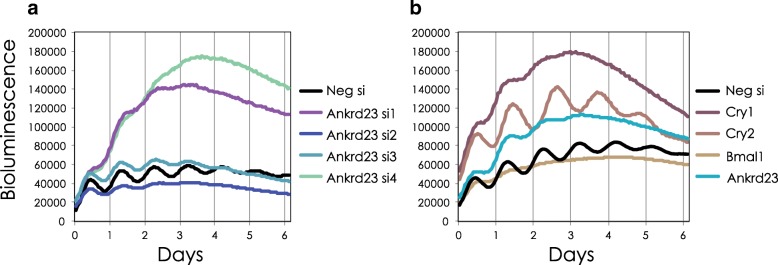Fig. 5.
Ankrd23 knockdown leads to arrhythmicity of circadian bioluminescence output in mammalian clock cells. a, b NIH3T3 cells stably expressing the mouse Per2 promoter driven destabilized luciferase reporter gene were reverse transfected with targeted siRNAs against Ankrd23 (n=4), negative siRNA, or pooled siRNAs (n=4) targeting known clock genes as controls. Transfected cells were synchronized with forskolin 24 h post-transfection. Bioluminescence was monitored in real time at a 1-h sampling resolution over 6 days. The mean bioluminescence data plotted (n=3) is a representative of three independent experiments. a Three out of four targeted siRNAs against Ankrd23 lead to an arrhythmic clock phenotype. bAnkrd23 siRNA pool (n=4) leads to a short/arrhythmic clock phenotype with an increased baseline similar to the Cry1 knockdown control phenotype

